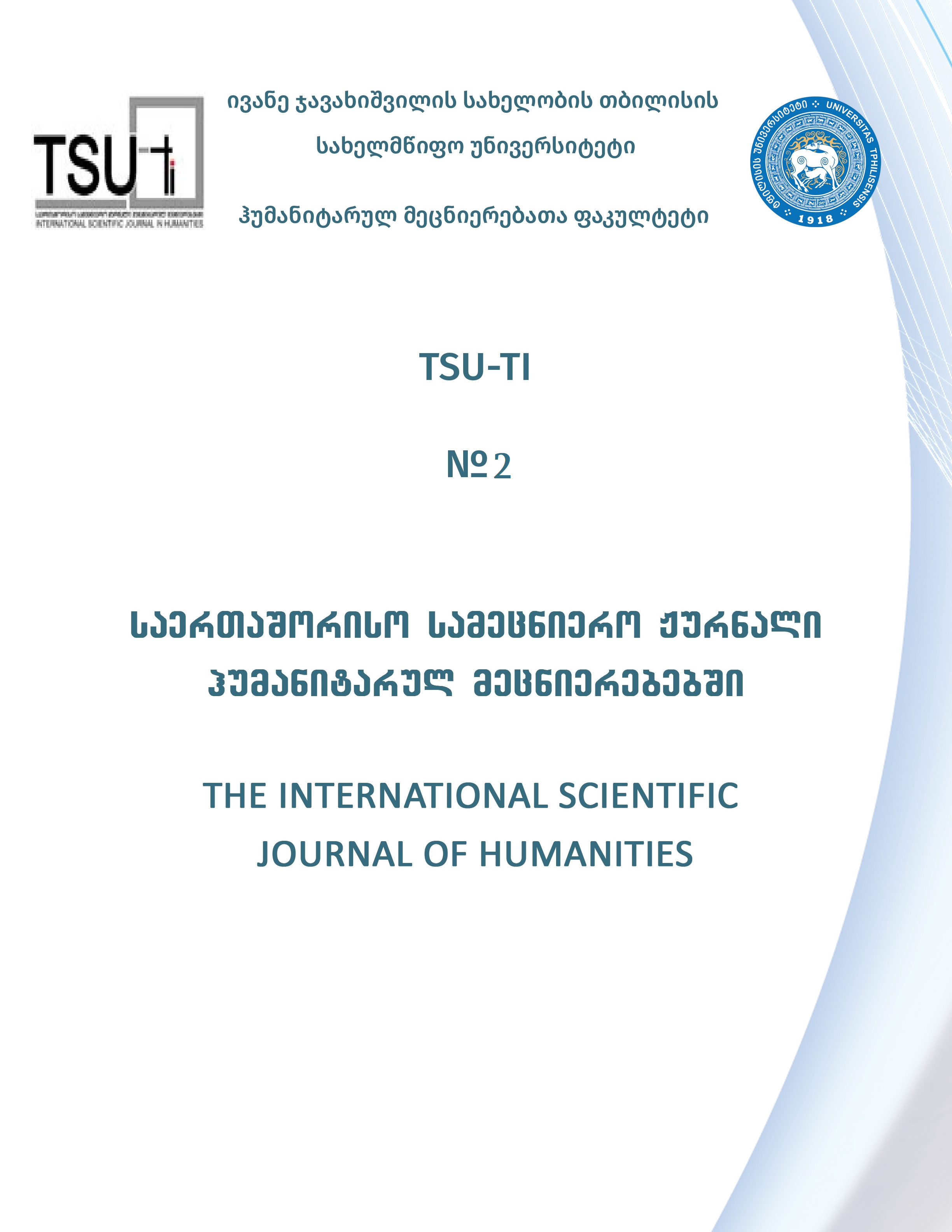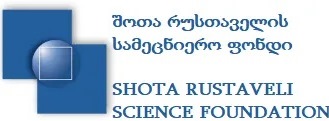Cases of Word Reduction in the Turkish Translation of “The Knight in the Panther’s Skin"
DOI:
https://doi.org/10.55804/TSU-ti-2/NikabadzeKeywords:
“The Knight in the Panther’s Skin, Turkish translation, word reduction, digital Rustvelology, nagubariAbstract
With the artistic realization of the worldview and aesthetic ideals of the 12th century, The Knight in the Panther's Skin stands as one of the most important masterpieces of world literature. A remarkable example of artistic creativity, The Knight in the Panther's Skin creates an independent reality and vast intellectual space. It is also worth noting that, from the perspectives of various disciplines, the translation of The Knight in the Panther's Skin into 58 languages represents an important research topic. Our research focuses on the Turkish translation of The Knight in the Panther's Skin, completed by Prof. Bilal Dindar and Asst. Prof. Zeinelabidin Makassi in 1992. It is important to mention that the Turkish translation was based on the Azerbaijani translation by Ahmed Javad. In this study, we will examine in detail the cases of word omission that the translators did not carry over into the Turkish version. The following lexical units are among those not translated in the Turkish text: [Nagubari], [Tskluli], [Mufarakhi], [Molizgharisad], [Mosatsevi], [Gamzrdeli], [Naertgulevi], etc. Using both contemporary and classical research methods, we present a critical analysis of each lexical unit. Our goal is to highlight the relationships between these lexical units and the similarities and differences between the translation and the original text. We will evaluate the translators' strategies and the degree of equivalence. It is worth noting that when The Knight in the Panther's Skin was written, Turkish classical literature—Diwan literature—was at its peak in Turkey. We will explore potential equivalents for these empirical words in Turkish classical literature and discuss how the translators might have rendered these lexical units in the Turkish translation of the poem. The methodological framework of the research includes a corpus-linguistic analysis of the original text and the Turkish translation of The Knight in the Panther's Skin. The researcher has also employed the method of linguistic-cultural analysis. To assess the adequacy of poetic translations, both quantitative and qualitative methods of analysis have been used. A comprehensive corpus-linguistic and linguistic-cultural study of the lexical units presented in the Turkish translation of The Knight in the Panther's Skin—such as [Nagubari], [Tskluli], [Mufarakhi], [Molizgharisad], [Mosatsevi], [Gamzrdeli], and [Naertgulevi]—will contribute to a deeper understanding of this important issue using innovative research methods. The research is relevant to both Georgian and Turkish scholarly fields, as well as to individuals and scholars interested in translations of "The Knight in the Panther's Skin".
References
აბულაძე, ი. (1967). რუსთველოლოგიური ნაშრომები. კრებული შეადგინა და
გამოსაცემად მოამზადა ი. მეგრელიძემ. თბ.: თბილისის უნივერსიტეტის გამომცემლობა.
ბერიძე, ვ. (1974). „ვეფხისტყაოსნის“ კომენტარი. მეცნიერება. თბილისი.
დარჩია, ბ. (2008-2009). კომიკური „ვეფხისტყაოსანში“, რუსთველოლოგია N 5, თბილისი.
ნათაძე, ნ. (2002). „ვეფხისტყაოსანი“ (სასკოლო გამოცემა), თბილისი.
ორბელიანი, ს. ს. (1949). „სიტყვის კონა ქართული, რომელ არს ლექსიკონი“, (ს. იორდანაშვილის რედაქციით, საქართველოს სსრ სახელმწიფო გამომცემლობა, თბილისი.
შანიძე ა. (1960). „ვეფხისტყაოსანი“, ჩვენი საუნჯე, ტომი 3, გამომცემლობა „ნაკადული“, თბილისი.
ჩლაიძე, ლ. და სხვ. (2001) თურქულ-ქართული ლექსიკონი, აღმოსავლეთმცოდნეობის ინსტიტუტი, თბილისი.
ჩუბინაშვილი, დ. (1984). ქართულ-რუსული ლექსიკონი. საბჭოთა საქართველო. თბილისი.
ჭინჭარაული, ალ. (1982). ვეფხისტყაოსნის ენისა და ტექსტის საკითხები, განათლება, თბილისი.
Akdemir A. (2007). Divan Şiirinde “Cünûn” ve “Mecnûn” Kavramları ile Bu Kavramların Fehîm-i Kadîm Dîvânı’ndaki Kullanımı, Bilig, Ankara.
Batislam D. (2013). Divan Şiirinde Su ve Suyla İlgili Unsurlar, ANADOLU’DA SU MEDENİYETİ DİZİSİ: 5, YAYIN NO: 8, Ankara.
Baykara T. (2003). Lala, DİA, 27. Cilt, İstanbul.
Ferşadoğlu, S. (2013). Hüznün ilâcı, kederin düşmanı.
Gider M. (2013). ŞEYHÜLİSLÂM YAHYÂ DİVÂNI’NDA SU, Türk Dünyası Araştırmalar, Sayı: 203, İstanbul.
Kutlar, F. S. (2015). İki Türkçe Cevahir-Nameye ve Cevherlerin Etkilerine Dair, Milli Folklor.
Şirazi, Ş. S. (2010). ‘‘Bostan’’, Ravza Yayınları, İstanbul, 2010
Yeşilbağ, S. (2019). Muhibbi Divanı’nda Değerli Taşlar, Divan Edebiyatı Araştırmaları Dergisi, İstanbul.
Downloads
Published
How to Cite
Issue
Section
License
Copyright (c) 2025 Authors Retain All Rights. TSU-ti has Only the Right of the First Publication.

This work is licensed under a Creative Commons Attribution-NonCommercial-NoDerivatives 4.0 International License.










